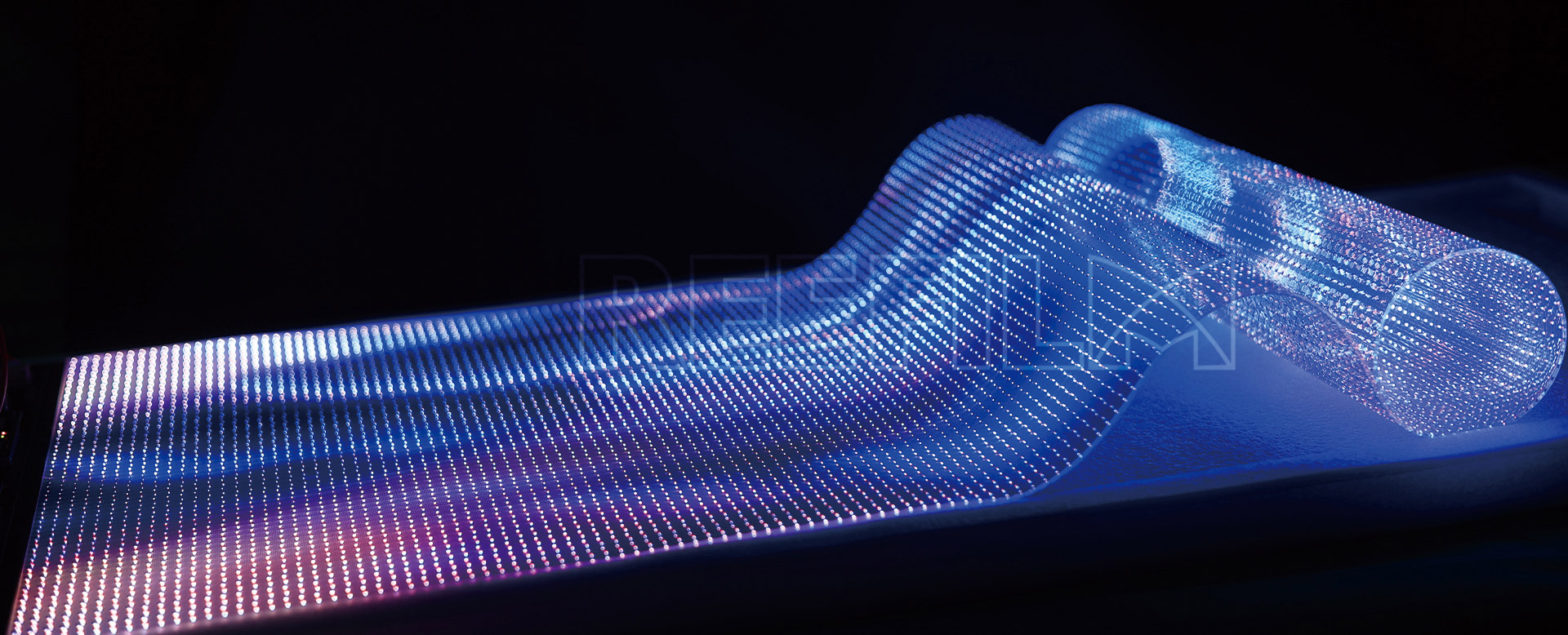
Led Screen is a flat display device that uses LED (Light Emitting Diode) as the display unit. LED screens use matrix-arranged LEDs to form a screen array, which can display images and videos by controlling the brightness and color of the LEDs. Led Screens have the advantages of high brightness, high contrast, bright colors, low power consumption and long life. It is widely used in indoor and outdoor billboards, stage performances, shopping malls, stadiums, conference rooms, etc., and has become an important information display and media communication tool.To achieve a curved display with LED screens, there are a few methods commonly employed:
1. Flexible LED Modules:
These modules consist of LEDs mounted on a flexible material such as silicone or PCB. The flexible nature allows them to conform to curved surfaces. These modules can be bent and shaped as required, creating curved or even cylindrical displays.
2. Flexible Printed Circuit Boards (PCBs):
The LED modules are mounted on flexible PCBs instead of rigid ones. These flexible PCBs can be bent and shaped, allowing the LED screen to follow the desired curved contour. The flexibility of the PCB allows for seamless integration with the LED modules and enables the entire display to bend uniformly.
3. Micro LED or Mini LED Technology:
In recent years, micro LED or mini LED technology has gained prominence due to its smaller size and high pixel density. With a more compact form factor, these LED chips can be arranged more flexibly on a PCB or a flexible substrate, making it easier to achieve curved displays with finer details and higher resolution.
4. Pixel Mapping and Mapping Algorithms:
To compensate for any distortion caused by bending the LED screen, advanced pixel mapping techniques and mapping algorithms are utilized. By adjusting the pixel configuration and mapping, the content can be accurately displayed without distortion on the curved surface.
5. Mechanical Construction:
The mechanical construction of the LED screen also plays a crucial role in achieving the desired curvature. Supporting structures or frames are designed to accommodate the shape, ensuring the flexibility of the LED modules is utilized without damaging the components. The frame should provide sufficient support and control the radius of the curve.

It's important to note that achieving a curved LED screen requires careful design, specialized manufacturing processes, and precise installation techniques. Collaboration with Led Display manufacturers or experts is recommended to ensure proper implementation and to select the most suitable technology for specific curved display requirements.